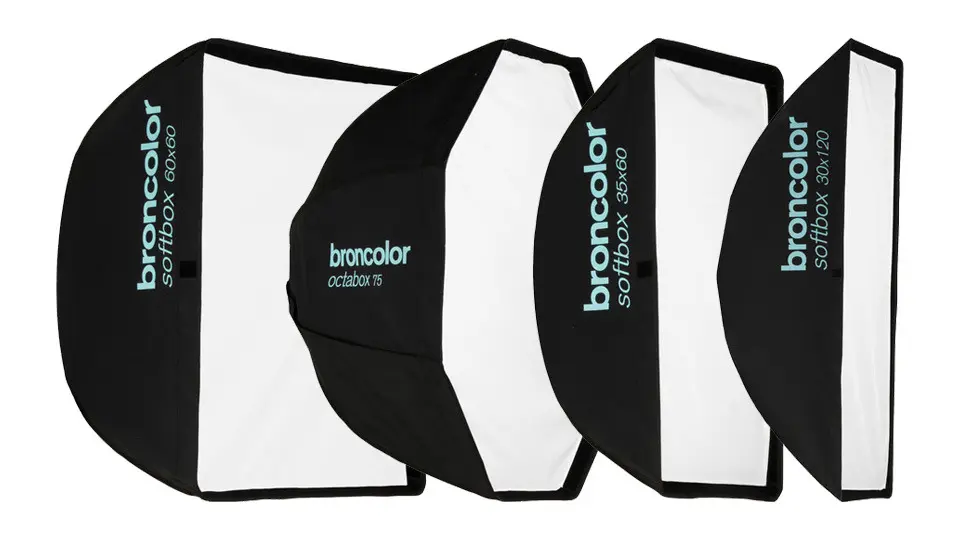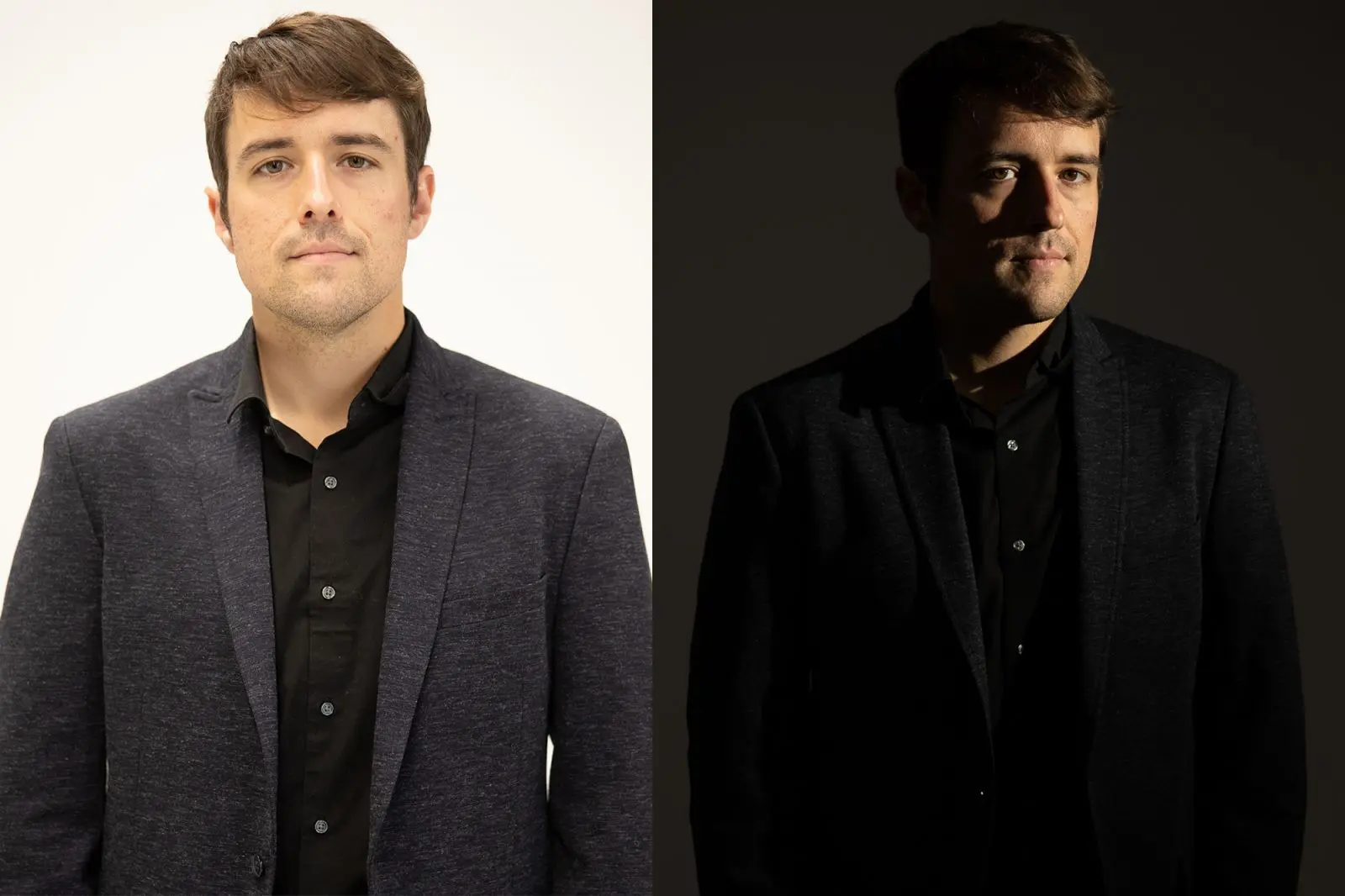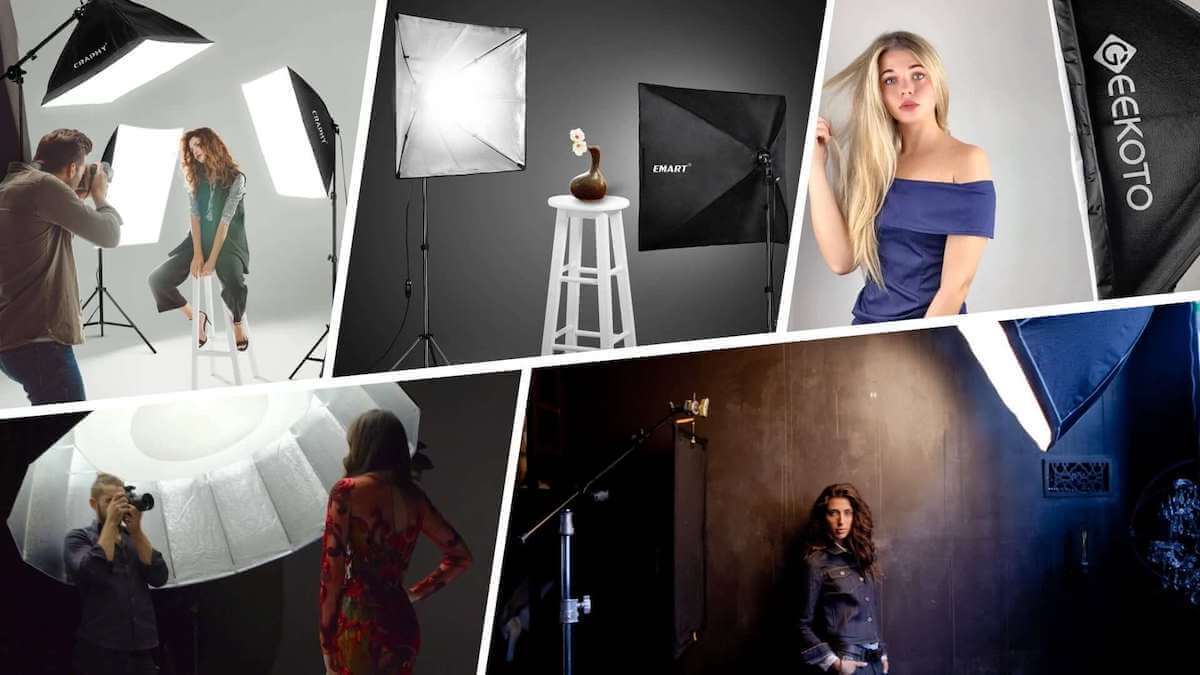Softboxes are the workhorse of any photography studio. In fact, it would be difficult to find any professional photographer who does not own one. What is a softbox and why are they so crucial for photographers? In this article, we’ll cover the essentials for this type of light and dive into when they should be used. We’ll also analyze the different types of softboxes available and the different effects of each.
What is a softbox?
What are softbox lights?
Softboxes come in a variety of sizes and shapes, but are all designed in the same way. Their design is entirely responsible for reducing the quality of light that photographers love. To better understand their design, let’s take a look at the definition.
Softbox photography
What is a softbox?
A softbox is a light modifier that confines light from an artificial source into a wire framed box and releases it through a layer of diffusion. Softboxes are commonly used in photography as a soft source of light that minimizes harsh shadows. The walls of a soft box are typically reflective to increase the light intensity as it escapes out through the front diffusion screen. Because of the consistent soft quality of light it produces, softboxes are versatile and used in all types of photography shooting products, portraits, food, and more.
What is a softbox used for?
- Soft light
- Fill light or key light
- Reducing harsh shadows
What is a softbox used for?
When to use a softbox
Softboxes are a studio photographer's best friend. Why? They are an incredibly versatile light that can be used to shoot nearly any type of subject. One of the most common reasons to use one is for soft light in controlled, often confined studio spaces. They can, however, be used on location as well.
Softboxes are often used as a key light or as a fill light. Their soft light makes it a great fill light that can keep an image from falling flat. This is especially important in a 3-point lighting setup. In our video breakdown below, we dissect the importance of fill light in creating beautiful images.
How to use softbox lights • Subscribe on YouTube
The positioning of the soft box can create a variety of different lighting styles which makes it so versatile. Whether it's Rembrandt lighting or chiaroscuro, they can help you whether you want to achieve a bright, high-key image or a dramatic image with contrast. Check out this video by the Slanted Lens to get a better understanding of their versatility.
Laws of Light: Softbox studio light
All softboxes aim to produce a softer quality of light that reduces harsh shadows and wraps around subjects. But the quality and shape of light can vary depending on the type you use. Let’s take a look at the different types of softboxes to better understand which are the best softboxes to buy.
Related Posts
Different types of softboxes
Types of softboxes
It can be easy to get overwhelmed when deciding which soft box to buy since there is quite a variety to choose from. Softboxes ultimately differ in two characteristics: size and shape. First, let’s take a look at the varying sizes.
Softbox sizes
Softboxes are available in all types of sizes but they can generally be categorized into small, medium, or large sizes.

What are soft boxes sizes
One might assume that a large one has a larger light spread than a small one. Surprisingly, all three sizes cover the same amount of area in light assuming that the light sources are the same distance from your subject.
The difference between the varying sizes of softboxes can actually be seen in the quality of light. Larger units produce softer light and undefined shadows. Smaller units produce harsher light and sharper shadows. For a visual demonstration of this, check out the video below comparing all three sizes.
Soft Boxes 101: A Lighting Lesson
Besides the quality of light, you might want to take into consideration where you will be doing most of your shooting. If you do a lot of on location shooting, you might want to opt for a smaller, more portable light.
Shape
In addition to size, softboxes are available in a variety of shapes. There are rectangular, square, strip, and octagonal-shaped models.

What are soft boxes shapes?
What is a softbox shape used for? Different shapes cover different areas and have different falloffs. Choosing the shape of your light will depend greatly on what you are shooting.
Rectangular are great for vertical portraits and compositions because of their vertical length. They can also be rotated for wider, horizontal compositions.
Square are common in close-up, portrait photography. They are also ideal for smaller studios with limited headspace. A downside to square-shaped lights is that they have some fall-off when composing vertical shots.
Octagonal are ideal for fashion and portrait photography as they have a natural wrap around effect. The reflection of an octagonal light in a subject’s eyes is circular which also appears more natural. Here is a field test of the octagonal light to get a better idea of how it can be used.
Softbox photography lighting
Strip softboxes have a longer dimension and are ideal for edge or rim lighting. They are great when you need to add a bit of separation to your image to keep it from falling flat.
Related Posts
Softbox light vs umbrella
Softbox vs umbrella
A common question beginner photographers have is “What is the difference between a softbox and other light sources with soft lighting?” Let’s start by taking a look at the softbox vs umbrella.
Umbrellas produce a soft, indirect light that is bounced. It is often considered more forgiving, but less versatile. Softboxes have more directionality and control than an umbrella. Check out the video below to see a visual comparison between softboxes and umbrella lights modifiers.
Softbox vs Umbrella: What is a softbox?
While both the softbox and umbrella produce a wide spread, soft light, they differ in directionality and how forgiving they are. If you are a straight up beginner photographer, umbrellas are cheaper and more forgiving. However, if you have a bit of lighting experience under your belt and need something with remote control, you may opt for the softbox.
Softbox light vs umbrella
Ring light vs softbox
Other than an umbrella modifier, softboxes are often compared to types of light sources such as the ring light. The difference in ring light vs softbox is the quality of light that they produce.
Softboxes, like we mentioned, create large, soft light that can still create shadows with a more even transition into highlights.
A ring light on the other hand, creates truly even lighting where the ratio of light on both sides of your subject is equal.

Ring light vs softbox
One benefit of the ring light is that it can also create cool, circular catchlights that are reflected in your subjects eyes. If you’re looking for a more dynamic lighting style that still produces shadows and some contrast, you might want to lean toward using softboxes. If you want a completely even lighting setup, the ring light is your best bet.
Softbox light vs umbrella
Softbox vs led panel
Last on our list of comparisons is the softbox vs LED panel. LED light panels have become incredibly popular for their versatility and ease of use. They differ from softboxes, however, in the quality of light they produce. Softboxes are designed to diffuse light through a modifier. LED’s however are a type of light source that produces a light that can be widespread, but not diffused.
To further diffuse an LED light panel, you will need a light modifier anyway. Check out this side by side comparison of softboxes and LED lights to get a better visual of this concept.
Softbox vs led panel • What to buy?
LED panels are a great light to buy. But comparing them to softboxes is a bit difficult since you are essentially comparing a light source vs a light modifier. The question you should ask is what type of quality of light do I want to use and make your decision based on the answer.
UP NEXT
Best soft box lights
Softboxes are a workhorse in the studio. Choosing the best one to buy, however, can be quite difficult. So we put together the ultimate buying guide so that you can purchase the best soft box light for your needs and projects.
Up Next: Soft Box Lights →
Showcase your vision with elegant shot lists and storyboards.
Create robust and customizable shot lists. Upload images to make storyboards and slideshows.
